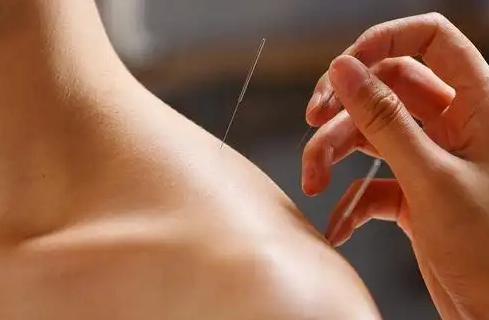Moxibustion and acupuncture are two time-honored therapies in Traditional Chinese Medicine (TCM) that have gained popularity worldwide for their healing benefits. While both treatments focus on restoring balance and improving health, they do so through different methods. Acupuncture uses fine needles to stimulate specific points on the body, while moxibustion involves the application of heat by burning mugwort (a herb) on or near acupuncture points. This article will explore the key differences and benefits of these two therapies, offering a helpful guide for those wondering which approach might be right for them.

How Both Therapies Work
Although both moxibustion and acupuncture originate from Traditional Chinese Medicine, their mechanisms are distinct.
Acupuncture:
Acupuncture involves inserting very fine needles into specific points on the body, known as acupoints, which correspond to pathways of energy called meridians. The idea is that by stimulating these points, acupuncture helps unblock or regulate the flow of vital energy (Qi), promoting healing and restoring balance in the body. Acupuncture is thought to improve circulation, relieve pain, reduce inflammation, and address a variety of physical and emotional issues.

Moxibustion:
Moxibustion, on the other hand, uses heat as its main tool. It involves burning dried mugwort near or directly on acupuncture points to provide warmth, which is believed to stimulate energy flow and blood circulation. There are two primary forms of moxibustion: direct moxibustion (where the moxa is applied directly to the skin, though not causing burning) and indirect moxibustion (where moxa is placed above the skin, often on a stick or cone). The heat from moxibustion is thought to activate the body’s energy, promote healing, and enhance the function of the internal organs.
Benefits of Moxibustion and Acupuncture
Both therapies offer unique benefits and can be effective in treating a wide range of health conditions. Here’s how they compare:
Acupuncture Benefits:
- Pain relief: Acupuncture is particularly well-known for its ability to treat chronic pain conditions such as back pain, arthritis, and migraines.
- Stress and anxiety reduction: Acupuncture can help reduce stress and anxiety by balancing the body’s energy and promoting relaxation.
- Digestive issues: Acupuncture can be effective in treating digestive disorders like irritable bowel syndrome (IBS) and indigestion.
- Improved sleep: Many people find relief from insomnia through acupuncture treatment.
Moxibustion Benefits:
- Boosts immunity: Moxibustion is believed to strengthen the immune system and improve the body’s ability to fight off illness.
- Cold and flu treatment: It’s particularly effective in treating conditions related to cold and deficiency, such as a weakened immune system or chronic colds.
- Menstrual health: Moxibustion is often used to help regulate menstrual cycles and relieve symptoms of conditions like endometriosis or menstrual cramps.
- Improves circulation: The heat from moxibustion is believed to stimulate blood flow, which can improve circulation and promote overall vitality.
Which Is Right for You?
Both acupuncture and moxibustion can be effective for improving health, but the choice between them largely depends on your specific needs and the condition you’re trying to treat.
Acupuncture may be right for you if:
- You’re seeking treatment for pain relief, especially if it’s related to musculoskeletal issues like back pain or arthritis.
- You’re dealing with mental health issues like stress, anxiety, or depression.
- You suffer from chronic conditions like migraines, digestive issues, or insomnia.
- You prefer a needle-based treatment that stimulates energy flow.
Moxibustion may be right for you if:
- You’re feeling generally cold or fatigued, or you have a weak immune system.
- You need treatment for digestive disorders that are caused by a cold or deficiency in the body.
- You’re looking to improve circulation or alleviate symptoms of menstrual irregularities or reproductive health concerns.
- You prefer a heat-based therapy that involves no needles.
It’s also worth noting that these two therapies can often be used together. Acupuncturists frequently incorporate moxibustion into their treatments, especially when addressing conditions related to cold or stagnation in the body. If you’re unsure which is the best fit for you, consulting a licensed TCM practitioner can help guide you toward the right approach.
Conclusion
In the debate of moxibustion vs. acupuncture, both therapies offer powerful healing benefits, yet they work through different mechanisms. Acupuncture is well-suited for addressing pain, mental health, and a wide range of chronic conditions, while moxibustion is particularly effective for boosting immunity, improving circulation, and treating cold-related or deficiency-based conditions. The best choice depends on your individual health needs, and sometimes combining both therapies might be the ideal solution.
Ultimately, whether you choose acupuncture, moxibustion, or a combination of both, these therapies are rooted in the ancient principles of Chinese medicine, emphasizing the importance of balance and energy flow for optimal health.